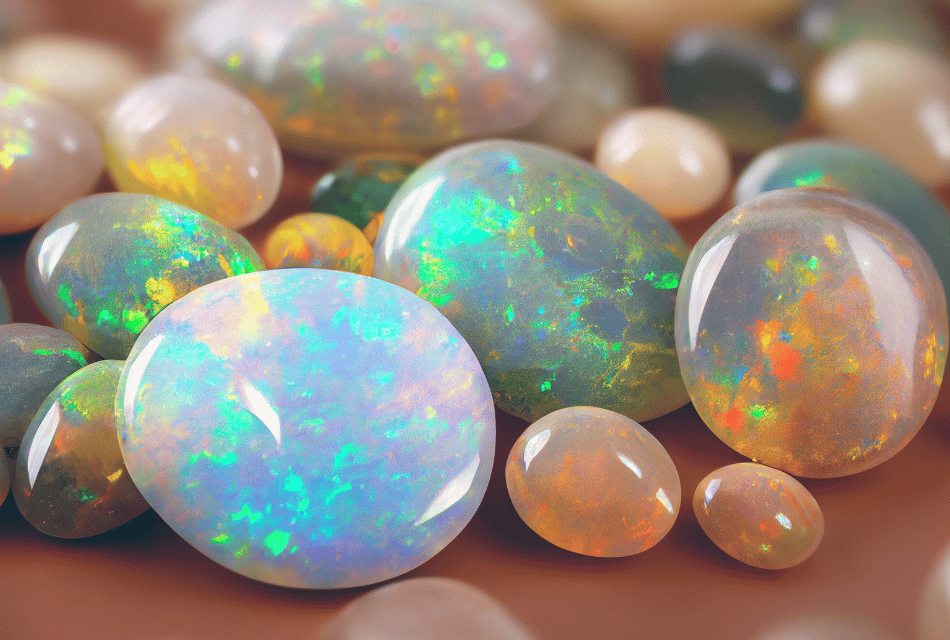Opal Magic: Unveiling the Mystique of Playful Colors
Introduction
Opals have long been admired for their mesmerizing play of colors, often described as nature’s fireworks. These stones are not just beautiful; they carry with them a rich history, deep symbolism, and a touch of magic. But what makes opals so special, and why are they considered one of the most enchanting gemstones in the world? Let’s dive into the captivating world of opals and uncover the secrets behind their magic.
What Is an Opal?
Opals are unique gemstones known for their vibrant colors that seem to dance on their surface. This phenomenon, known as “play-of-color,” is caused by the diffraction of light as it passes through tiny silica spheres within the stone. Unlike most gemstones, opals do not have a crystal structure, making each one completely unique. Historically, opals have been found in Australia, Mexico, and Ethiopia, with Australia being the most prolific source.
Types of Opals
Opals are categorized into two main types: precious and common.
Precious Opals
- Black Opal: The rarest and most valuable, with a dark body tone that enhances the play-of-color.
- White Opal: The most common type, with a milky white base and a more subdued color play.
- Boulder Opal: Found in ironstone, these opals display bright colors against a dark background.
Common Opals
- Fire Opal: Known for its bright, fiery hues, particularly orange and red.
- Milk Opal: A more opaque stone with a creamy appearance and limited play-of-color.
The Science Behind Opal’s Colors
The stunning play-of-color seen in opals is due to the unique arrangement of silica spheres within the stone. These spheres, which are microscopic in size, diffract light in different directions, creating a spectrum of colors. The size and uniformity of these spheres determine the brilliance and variety of the colors displayed. This optical phenomenon is what gives opals their magical, almost otherworldly appearance.
The History and Lore of Opals
Opals have been revered for centuries, with ancient civilizations attributing various mystical properties to them. The Romans believed opals brought good fortune, while the Greeks thought they bestowed the gift of prophecy. In the Middle Ages, opals were considered symbols of purity and hope. However, there were also darker legends, with some cultures associating opals with bad luck, particularly when not worn by their rightful owners.
Opal in Modern Culture
Today, opals continue to be a popular choice in jewelry, prized for their unique beauty and versatility. They are often used in rings, necklaces, and earrings, adding a touch of elegance and mystery to any outfit. Beyond fashion, opals have also found their way into art and design, symbolizing creativity, passion, and transformation.
How to Choose the Perfect Opal
When selecting an opal, consider the four Cs: color, clarity, cut, and carat. The play-of-color is the most important factor, with brighter, more vivid colors being more desirable. Clarity refers to the presence of inclusions or imperfections, while cut and carat influence the stone’s overall appearance and value. When buying an opal, always look for stones with a well-defined play-of-color and minimal inclusions.

